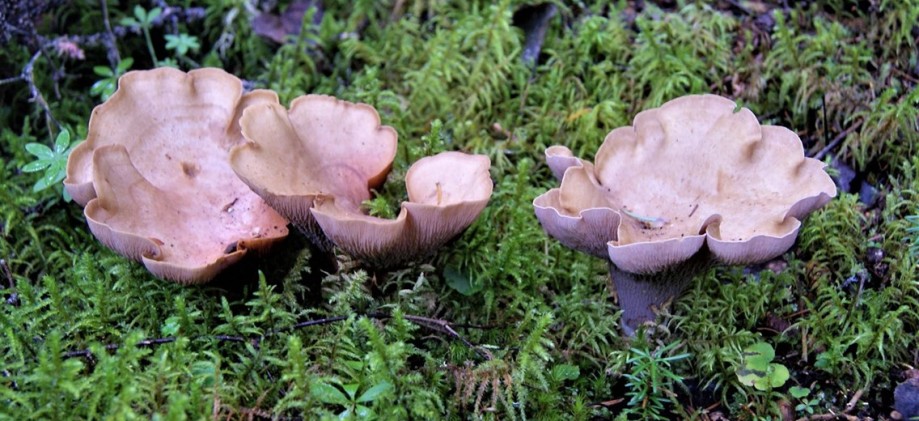Identifying Your Chanterelles

Fruit body
When mature, the fruiting bodies of this chanterelle are easily recognized by their inverted club-shaped shaped fruitbodies.
Cap
Caps up to 10 cm wide, at first clavate, the apex truncate, expanding to form a vase-shaped fruitbody, one side typically showing geater developement than the other, surface smooth to finely squamulose, especially near the center, the latter often depressed, lavender-purple to purple-brown when young, fading to buff-brown in age.
Hymenium surface
Fertile surface decurrent, varing from blunt, interconnecting ridges to anastomosing veins and wrinkles, lilac purple to purple brown fading in age.
Stalk
5 cm long X 1-3 cm tick; short, solid, sometimes hollow at maturity, central to laterally attached, tapering downward, often fused at the base with adjacent fruitbodies, surface lilac-brown apically, white to pale brown below.
Comments
Send a comment
No comments yet.
For more informations





























